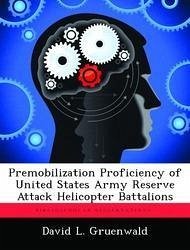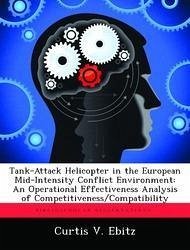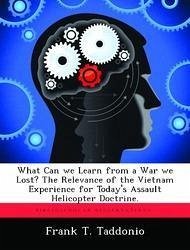Nicht lieferbar

Premobilization Proficiency of United States Army Reserve Attack Helicopter Battalions
Versandkostenfrei!
Nicht lieferbar
Attack helicopter battalions are combat maneuver units that conduct supporting attacks which aid, protect, and compliment other maneuver forces by destroying massed enemy mechanized forces and other enemy forces with aerial firepower, mobility, and shock effect. They are employed as a battalion in order to provide the commander with this highly mobile and lethal destruction capability. The fundamentals of attack helicopter operations do not change by component. Reserve Component attack helicopter battalions are expected to perform attack helicopter operations to the same level of proficiency o...
Attack helicopter battalions are combat maneuver units that conduct supporting attacks which aid, protect, and compliment other maneuver forces by destroying massed enemy mechanized forces and other enemy forces with aerial firepower, mobility, and shock effect. They are employed as a battalion in order to provide the commander with this highly mobile and lethal destruction capability. The fundamentals of attack helicopter operations do not change by component. Reserve Component attack helicopter battalions are expected to perform attack helicopter operations to the same level of proficiency or standard as the Active Component. Currently, there is conflicting guidance published by Forces Command as to what level of proficiency aviation units in the Reserve component should train to in premobilization in order to prepare for their wartime mission. This study examines the ability of United States Army Reserve (USAR) attack helicopter units to maintain proficiency at the battalion level in a premobilization environment. It focuses on the resources available to Reserve units and the training requirements placed on a unit. It concludes with an analysis of a USAR attack helicopter unit's ability to execute all training requirements in the time available to them each training year. It offers recommendations on possible alternative training strategies and provides suggestions for further research. This work has been selected by scholars as being culturally important, and is part of the knowledge base of civilization as we know it. This work was reproduced from the original artifact, and remains as true to the original work as possible. Therefore, you will see the original copyright references, library stamps (as most of these works have been housed in our most important libraries around the world), and other notations in the work. This work is in the public domain in the United States of America, and possibly other nations. Within the United States, you may freely copy and distribute this work, as no entity (individual or corporate) has a copyright on the body of the work. As a reproduction of a historical artifact, this work may contain missing or blurred pages, poor pictures, errant marks, etc. Scholars believe, and we concur, that this work is important enough to be preserved, reproduced, and made generally available to the public. We appreciate your support of the preservation process, and thank you for being an important part of keeping this knowledge alive and relevant.








